South American women have always been considered the international symbol of energy, charisma, and passion, with their lightly tanned skins, desirable physique and their dynamic, hospitable personality. Hence, possessing such traits, it is also believed that South American hair would be as dynamic, strong and lively as its owners. As unfounded as such a belief, this assumption however, has led to a huge surge toward South American hair, especially for Brazilian, Peruvian hair – the two most popular hair lines out there.
Hair businesses, facing this huge business opportunity, are extremely eager to start stocking these hair lines into their inventory, even when little is known about the differences between Peruvian hair vs Brazilian hair. This is an extremely unwise move, considering this critical lack of information can lead you to stock the wrong type of hair, leading to detrimental profit loss.
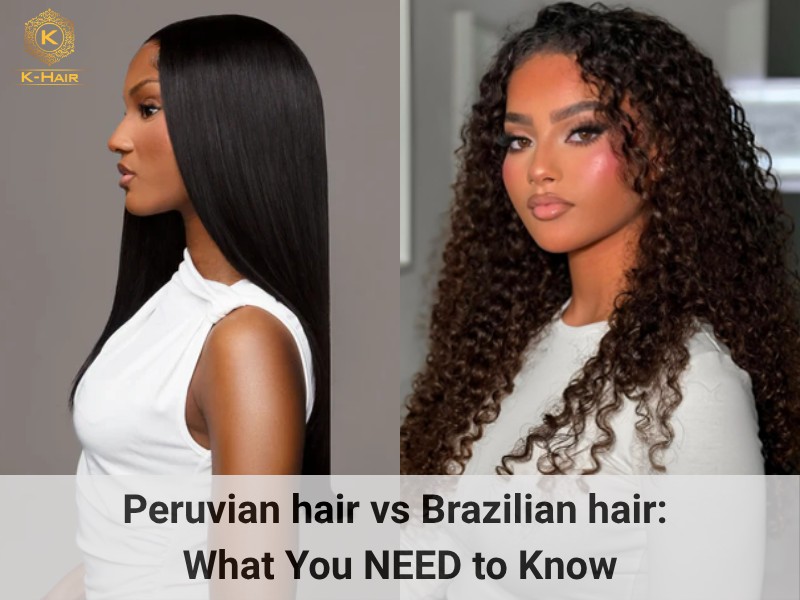
1. What is Peruvian hair?
Peruvian hair, much like its name, is hair collected directly from Peruvian women, or at least processed to mimic the textures, appeal of natural Peruvian women’s hair. Peru, or the Empire of the Sun like many usually call it, is well-known for its highly diverse and contrasting climate, consisting of both high heat from the desert, cold breeze from the mountain, and tropical humidity. Such climate features have, undoubtedly, had its influence in deciding the genetic traits of the Peruvian women’s hair residing in here.
Hence, when discussing Peruvian women’s hair, hair experts cannot skip one of the crucial parts of its identity – its versatility and low maintenance. Indeed, due to belonging to such varied climate patterns, Peruvian hair tends to be lightweight, adaptive, with various textures such as straight, wavy, to tight curls and coily hair. Furthermore, in terms of hair appearance, Peruvian hair is also recorded to have a much softer cuticle layer, which ultimately leads to softer physical traits, which appeals more to customers upon the first touch.
In terms of innate qualities, Peruvian hair is also highly in favour of hair buyers in the market, mainly for their easy maintenance. Indeed, thanks to their soft, silky textures, little to no tangling and shedding is to be spotted in a typical Peruvian hair, leading to only little detangling to be done to keep the hair from breaking. Furthermore, as adaptive as it is, Peruvian hair can take on a dry or humid climate at ease, without being subjected to frizziness or dehydration.
In the market, Peruvian hair might not be as popular as Brazilian hair, but it is also a solid hair choice considering its natural look and versatile qualities. Indeed, its soft, lightweight and natural textures, together with its adaptability and low-maintenance, Peruvian hair has been the go-to choice for customers looking for natural beauty in their products.

2. What is Brazilian hair?
Brazilian hair, in the market, tends to have two different origin options, one being collected directly from Brazilian women, another being collected from mixed sources, processes to mimic the features of natural Brazilian hair. Regardless of origin, Brazilian hair tends to have several common traits seen across Brazilian hair vendors in the market.
Brazil – the Tropical Giant of South America, is well-known for its tropical, humid, rainy climate, with almost year-round rain distribution and extremely hot summer. These climate characteristics, much like the case of Peruvian hair, play a crucial role in deciding the genetic, inherent traits of Brazilian hair. Indeed, facing such high humidity, the hair has adapted into growing stronger strands and releasing more natural oil to provide better protection from frizziness. Hence, when describing Brazilian hair, we cannot ignore its shiny, dense and thick appeal. In fact, Brazilian hair is among the thickest, densest hair out there, with such an impressive, highly exclusive natural volume that can only be seen in this particular hair line only.
Furthermore, from a practical perspective, Brazilian hair is also highly praised in the global market for its durability and luxurious aesthetic. Upon first impression, it provides a bold, voluminous look that is often associated with luxury, confidence, and elegance. Moreover, its durability, inherent hair strength also allow Brazilian hair to be dyed, styled, and reused multiple times without taking severe damage, making it a high-value hair origin option for wholesale buyers and salon professionals seeking longevity and client satisfaction.
In the market, Brazilian, alongside Vietnamese, Indian hair, is the most sought-after and globally-acclaimed hair line there is! Indeed, given the global sensation toward thick, lustrous, Brazilian hair has everything it takes to maintain its popularity and in-demand status.
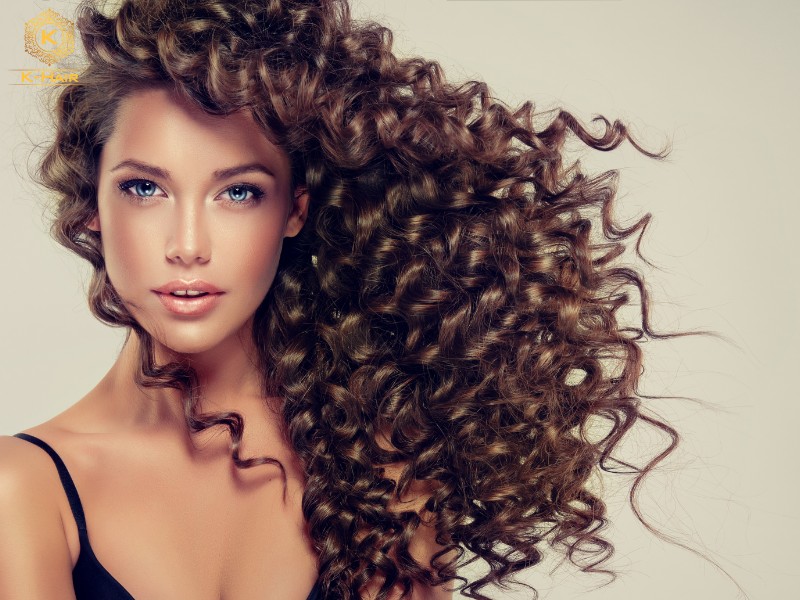
3. The similarities between Peruvian hair vs Brazilian hair
Peruvian hair vs Brazilian hair has always been one of the hottest hair discussion topics in the hair community. Indeed, facing such two convincing and popular hair options, confused hair buyers tend to go out of their way to distinguish the differences between Peruvian and Brazilian hair. However, before discussing differences, it is suggested to first go through its similarities, to gain a thorough perspective of these hair lines:
- Mixed hair qualities: despite what many might assume, many Peruvian hair vs Brazilian hair products in the market are mostly initially sourced from external hair supplies, rather than collected within its own local communities. Indeed, nowadays, as Peru and Brazil become more and more subjected to the Western, Northern American beauty culture, more and more women in these countries are using bleach and hair dye to style and alter their hair appearance. Facing such scarcity of pristine raw hair quality, most wholesalers in these two countries have resorted to sourcing hair from other more abundant sources such as Vietnam, India,… leading to highly mixed hair quality in the market.
- Diverse natural textures: Peru and Brazil, despite their differences, share one thing in common – their highly diverse demographic, consisting of citizens of European, Latin, African cultural backgrounds. Hence, as a result, their genetics tend to be a unique combination of numerous significant traits associated with different races residing in the countries. Hence, such a varied demographic has also made its impact on the women’s inherent hair traits, making it as diversified as it is. Indeed, in the market, we can see many natural textures of Peruvian hair vs Brazilian hair, such as straight, natural curly, kinky curly,… offering a wide range of texture options for choosing.
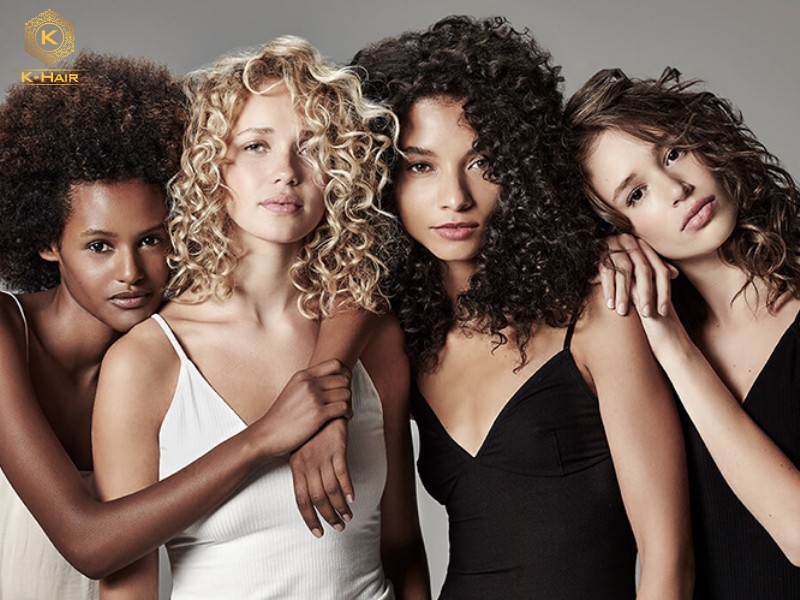
- Durability: Peruvian hair vs Brazilian hair are both strong hair options to consider, especially if you are looking for durable and high-performance hair products for their inventory. Indeed, both hair, if taken good care of, can better-preserve its original, pristine hair health, limiting chances of tangling and shedding upon hair use, hence, further adding up to its longevity and long-term use potential. In fact, these two hair lines can both be kept for years, making them a worthy investment for long-lasting hair use. Furthermore, both Peruvian hair and Brazilian hair can allow repetitive styling. From straightening, curling, to dyeing and bleaching, these hair lines can take on it all, without taking serious damages.
- Natural appearance: another trait they have in common is their desirable physical hair appearance. Indeed, Peruvian and Brazilian hair are rarely hard to style hair lines, as with their natural, elegant look, these hair types can blend in with almost all hair textures, types and colors of its wearer, creating the ultimate effortless, glamorous and naturally beautiful hair effect. Furthermore, Peruvian hair or Brazilian hair, both of these hair origins are able to provide the gorgeous, lustrous, natural, glamorous hair look to its wearer, helping them to achieve their own desired look and elevating their original natural beauty.
- Strong market demands: Peruvian hair vs Brazilian hair has been competing for the most popular South American hair types in the market. But putting competition aside, both of these hair types are among the key hair product lines of Latin American hair. Indeed, with its huge contribution to the resounding success of South American hair export, Peruvian and Brazilian hair is among the most popular hair origin, slowly but steadily taking the lead compared to other rivals in the market. Indeed, their customer base spread across the globe, with buyers attracted toward these hair lines mainly for their desirable physical traits and impressive innate qualities.
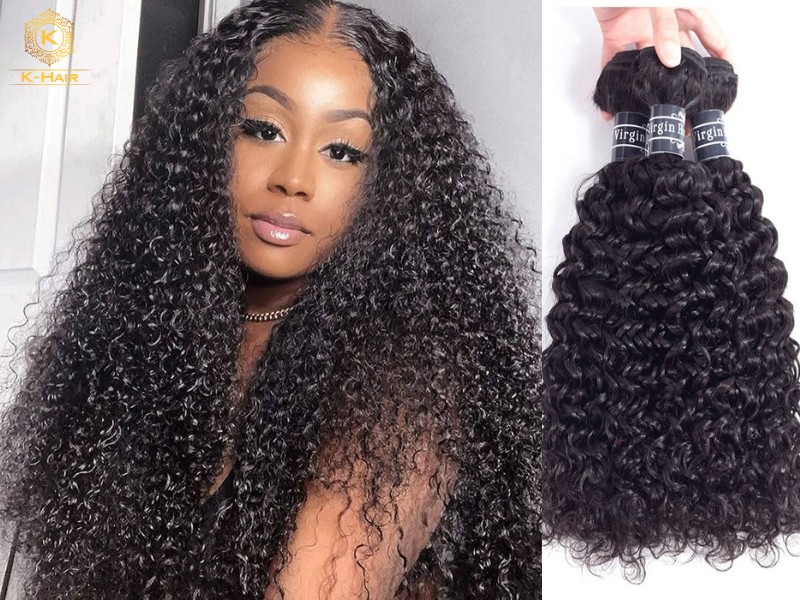
4. Difference between Brazilian and Peruvian hair
When sourcing South American hair, it is almost inevitable for all hair buyers, eight beginner or experienced buyers, to make mistakes and misunderstand the key differences between these two popular hair types. Indeed, this unfortunate understanding has led to many cases of overstocking the wrong hair items, or budget imbalance and non-moving inventories that fail to be marketized.
Hence, to avoid such mistake, hair buyers should be better-informed of the difference between Brazilian and Peruvian hair:
| Peruvian hair | Brazilian hair | |
| Appearance | In terms of appearance, Peruvian hair is among the most natural-looking hair types out there:
|
In the market, Brazilian hair is widely praised for its full, glossy, and bouncy look:
|
| Density |
|
Brazilian hair carries naturally high density, giving it a thicker and fuller feel.
|
| Climate adaptability | Peruvian hair adapts well to both dry and humid weather, maintaining its softness and smooth surface without frizziness.
|
Brazilian hair is naturally resistant to humidity and frizz, thanks to its dense and strong cuticle structure.
|
| Styling range | Peruvian hair is highly versatile and easy to style.
|
Brazilian hair is known for its styling durability.
|
| Suitable for? |
|
|
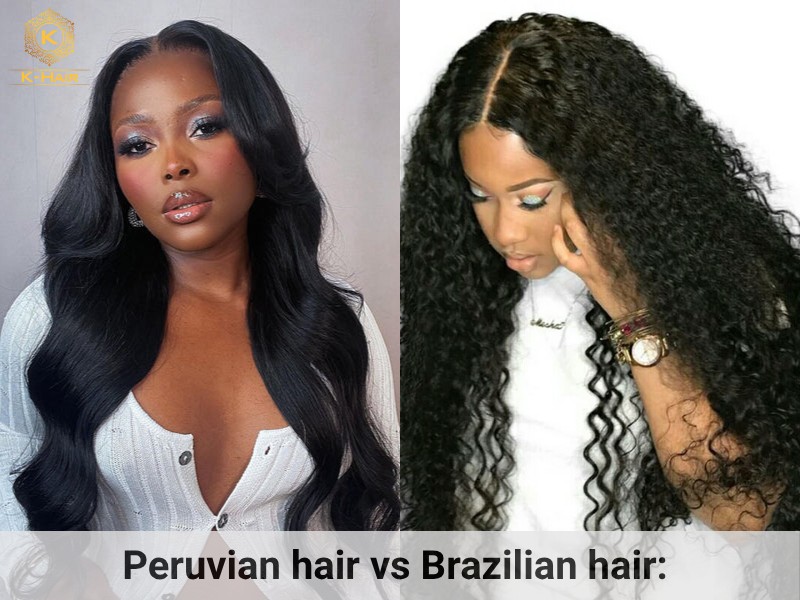
5. Which hair is better Brazilian or Peruvian?
Given the above knowledge about the similarities and differences between Peruvian hair vs Brazilian hair, readers must have been more than well-informed of the type’s features, their perks and drawbacks. To answer the question: “What type of hair is better?” – choose between the options and pick out the superior one, the answer would be highly complicated and strictly depends on the buyer’s specific hair preferences and their target audience’s interests.
- Peruvian hair: distinct for its natural-looking, soft, silky and light weight hair strands, Peruvian hair cater to a specific customer base. Indeed, in the market, the famous soft, lightweight and manageable Peruvian hair is the strongest hair option out there, especially for customers aiming for natural beauty, low-maintenance hair solutions. Thanks to the European beauty standards focusing on elegance and effortlessness, this market is often the biggest consumer of Peruvian hair – a perfect market sector to aim for if you plan to set this particular hair line as your niche products.
- Brazilian hair: Brazilian hair’s physical and innate traits have landed it one of the leading, most in-demand positions in the market. In fact, given the global hair sensation toward thick, voluminous, sleek hair, Brazilian hair poses as the perfect match for such hair needs. Its thickness, natural hair volume, as well as its ability to hold curls for a longer time are the reasons behind its international popularity. For hair businesses aiming for markets such as the US, Africa – where these hair trends are the most prominent.
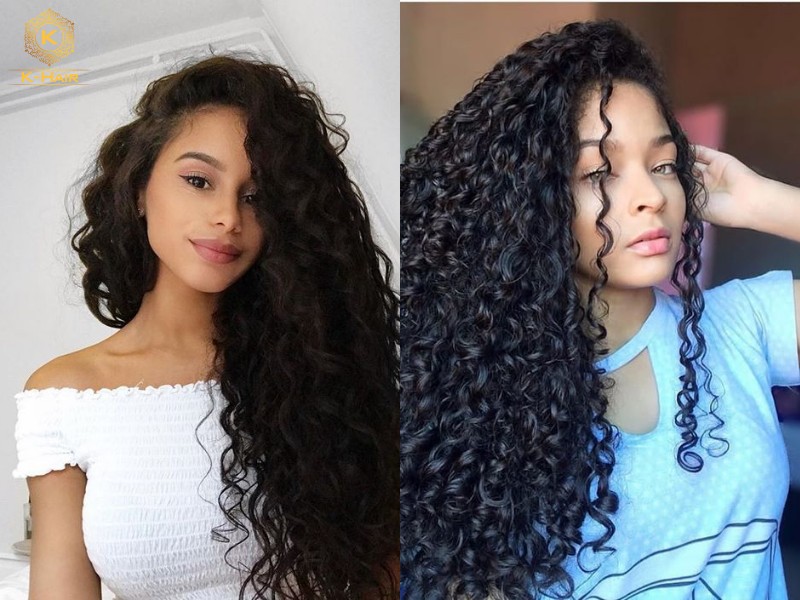
6. Vietnamese hair: The biggest competitors of Peruvian hair and Brazilian hair
When a proportion of hair buyers are still stuck with the decision of Peruvian hair vs Brazilian hair, many others have started turning to other sources, namely Vietnamese hair. Indeed, given the significant, desirable traits of this particular hair line, Vietnamese hair has not only become the suitable alternative for the classic South American hair options, but also secure for itself global reputation.
6.1. Hair quality
Since its first appearance on the global market, Vietnamese hair has long been recognized as one of the world’s finest hair there is! This reputation is well-deserved, as Vietnamese hair is known for its exceptional softness, silky texture, and naturally smooth appeal, featuring thick, strong strands with a healthy, deep black tone – superior to the dense, heavy-weight appeal of Brazilian hair. These impressive, exclusive qualities are rarely by coincidence, rather, they are shaped by the country’s unique natural and cultural characteristics. For example, Vietnam’s tropical monsoon climate, which offers the perfect balance of warmth and humidity, provides ideal conditions for healthy, thick hair growth. This, combined with the locals’ natural diet and traditional herbal hair care practices, Vietnamese hair possesses all the favourable conditions to grow to become as remarkably strong, shiny, and full of life as it is!
Across the world, stylists and hair professionals continue to praise Vietnamese hair for its versatility, it can be dyed, bleached, and styled without losing its softness or shine. Its rich volume, natural lustre, and impressive durability make it a top choice among end-users, surpassing Peruvian hair in terms of versatility, ensuring satisfaction for a variety of market needs.

6.2. Hair origin
In the past, Vietnam mainly served as a raw hair supplier for other international distributors, namely the Chinese hair industry. However, with the country’s strong economic growth, Vietnamese hair manufacturers have successfully overcome the influence of external forces, gaining full control over their own sourcing and production systems.
Most factories are strategically located in northern Vietnam, a region known for its abundant and affordable hair resources. The area’s limited exposure to modern hair treatments like bleaching or dyeing ensures that the hair collected here remains in its healthiest, most natural condition. Additionally, many women from northern ethnic minorities still maintain the tradition of growing their hair long and uncut. This results in a rare, valuable supply of natural hair in longer lengths, something that remains highly sought after in the global hair market.
Hence, when placed right next to the mixed-quality Peruvian hair and Brazilian hair, Vietnamese hair is among the more superior, rarer hair sources that could still preserve their authentic origin, despite the global scarcity of quality hair.

6.3. Price & Customization
Thanks to their hands-on production system, Vietnamese hair factories can offer far more competitive prices compared to Peruvian hair vs Brazilian hair. By removing the middleman, they reduce external costs and offer genuine factory-direct pricing. Buyers can access the finest Vietnamese hair in the market for as low as $8 per bundle, making it a highly cost-effective choice for both wholesalers and retail buyers.
Another strong advantage of working directly with the factory is customization. Buyers can easily request specific lengths, textures, colors, and densities to match their customers’ exact preferences. For instance, K-Hair, one of Vietnam’s leading and most recognized hair factories, allows customers to customize their orders based on the reference images they provide. This kind of flexible, customer-centered business approach, giving direct buyers the chance to create highly tailored, market-ready products for a wide range of clients.
Possessing such desirable traits, Vietnamese hair has successfully become one of the leading hair sources in the market, even surpassing Peruvian and Brazilian hair in terms of hair qualities, authenticity, pricing, and overall market reputation. For hair buyers unable to decide between Peruvian hair vs Brazilian hair, or are looking for an alternative for such mixed hair quality, Vietnamese hair poses as the perfect candidate!
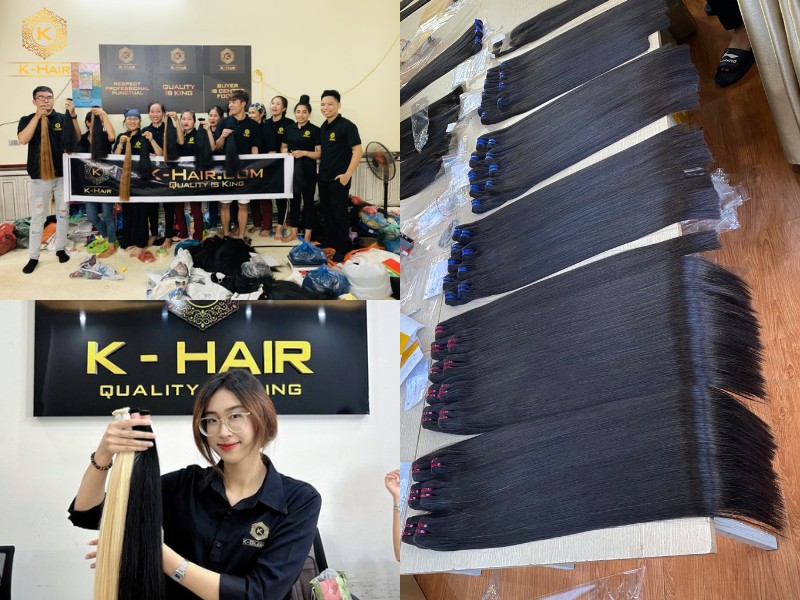
>>Want to know more about Vietnamese hair? Check out this video for the most SHOCKING truths:
SHOCKING TRUTH-Hair extensions knowledge
7. Conclusion
With the information provided in this article, we hope that we have managed to assist young, ambitious business women in the hair industry about the overall market, tips, and most importantly, the differences between Peruvian hair vs Brazilian hair. Doing business requires long-term commitment and support from trustworthy business partners, we proudly present ourselves – K-Hair, not only as a trusted hair supplier, but also a supportive friend who will always have your back in this competitive industry.
Need to chat with a hair specialist? Contact us through the following link:
- Website: https://khairvn.com/
- Address: 10A, 171 Nguyen Ngoc Vu, Cau Giay, Hanoi, Vietnam
- Phone: +8492 633 2545 (WhatsApp)
- Email: [email protected]
- Facebook: https://www.facebook.com/KHairFactoryVN/
- Youtube: https://www.youtube.com/c/KHAIRFACTORYBESTVIETNAMHAIR
- Whatsapp: +8492 633 2545

